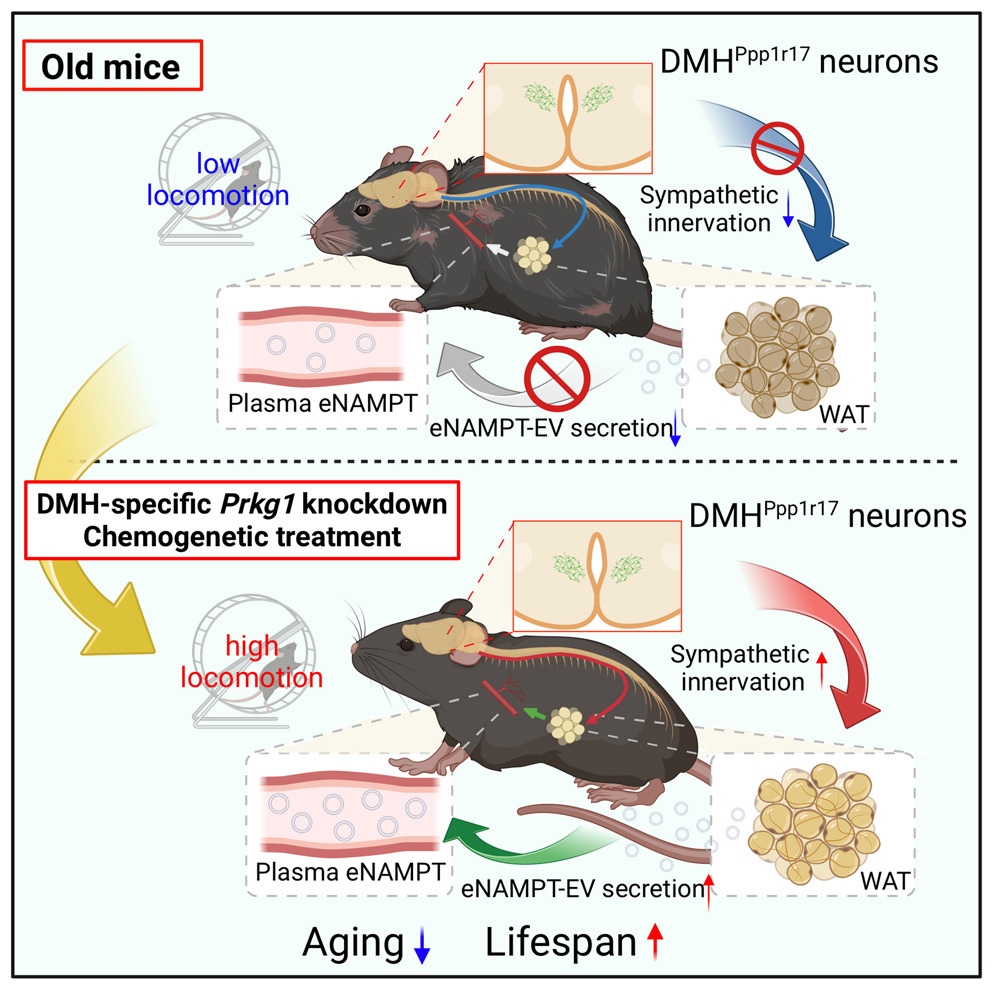The research paper the story is based on…
DMHPpp1r17 neurons regulate aging and lifespan in mice through hypothalamic-adipose inter-tissue communication
Recent studies have shown that the hypothalamus functions as a control center of aging in mammals that counteracts age-associated physiological decline through inter-tissue communications. We have identified a key neuronal subpopulation in the dorsomedial hypothalamus (DMH), marked by Ppp1r17 expression (DMHPpp1r17neurons), that regulates aging and longevity in mice. DMHPpp1r17 neurons regulate physical activity and WAT function, including the secretion of extracellular nicotinamide phosphoribosyltransferase (eNAMPT), through sympathetic nervous stimulation. Within DMHPpp1r17 neurons, the phosphorylation and subsequent nuclear-cytoplasmic translocation of Ppp1r17, regulated by cGMP-dependent protein kinase G (PKG; Prkg1 ), affect gene expression regulating synaptic function, causing synaptic transmission dysfunction and impaired WAT function. Both DMH-specific Prkg1 knockdown, which suppresses age-associated Ppp1r17 translocation, and the chemogenetic activation of DMHPpp1r17 neurons significantly ameliorate age-associated dysfunction in WAT, increase physical activity, and extend lifespan. Thus, these findings clearly demonstrate the importance of the inter-tissue communication between the hypothalamus and WAT in mammalian aging and longevity control.
